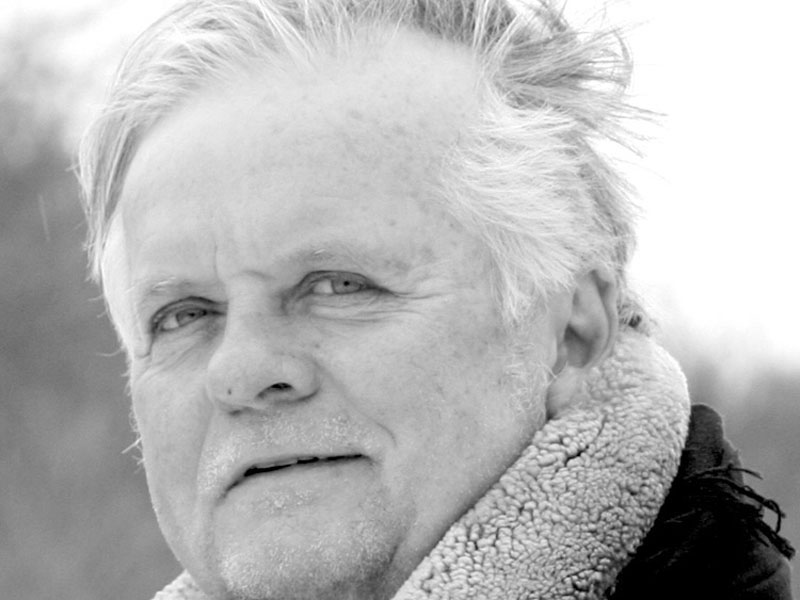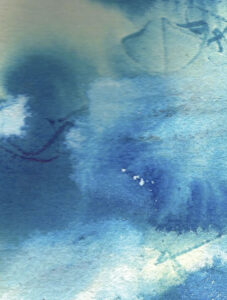walkingwiththunder.com
Highway 62

By Conrad Beaubien
Maybe that’s life in general. Crossing the bridge out of Belleville, County bound. At the highest rise of the road-link, sky and bay merge into shades of slate and asphalt and the limestone colour of my woollen high neck sweater. I spot a figure below, down there by water’s edge, subdued beneath the rattle of trucks and whine of tires; a passing snapshot of a fisherman just as he casts his line. He’s a tall man, green jacket and boots standing on the old concrete landing of the old bridge, the one before the one I’m on that is, the one that replaced the ferry that once carried the days and hopes of the many who fished and travelled this way before.
Alone, the fisherman is seamless as the solitude of bay waters on a rainy day; he casts the line and plays the ancient role of the hunter, for walleye and bass and maybe other fish, but I suppose he also casts for comfort of mind. I think that only because I believe we have all stood in the moments of rainy days where in the air there remained the rumble of comings and goings, meanwhile feet in boots on soggy ground called on inner parts of us to marry with the quietude of rain.
 Past The Alley and Darling Debbie’s I hold the steering wheel, hands in gloves, windshield wipers stirring reminders of this morning when murmurations of starlings horsed around in the airspace of the season, jogging, romping, blackening drowsy fields now resting with harvest done. And then the cloud of birds—Shakespeare’s stocky blackbirds—winged en masse over cattle that, content in the loose muck of the rising creek added to a gray scale montage; the first dampness of October’s end; the Holsteins whose markings likened to the once dark continents on a classroom globe; all of it ran together as a lyric of the day.
Past The Alley and Darling Debbie’s I hold the steering wheel, hands in gloves, windshield wipers stirring reminders of this morning when murmurations of starlings horsed around in the airspace of the season, jogging, romping, blackening drowsy fields now resting with harvest done. And then the cloud of birds—Shakespeare’s stocky blackbirds—winged en masse over cattle that, content in the loose muck of the rising creek added to a gray scale montage; the first dampness of October’s end; the Holsteins whose markings likened to the once dark continents on a classroom globe; all of it ran together as a lyric of the day.
The fall of the year lays bare the rises, slopes and valleys; the fields hidden by summer foliage now rise up in this song-like way. This particular fall has seemingly arrived faster than our accustomed pace, yet it is here now and soon to be followed by winter. The rhythms of human lives on the planet may have changed, but the rhyme of the seasons remains.
Behind the wheel, past Huff’s Island, Valley, Union and Mountain View Roads: Once moulded by glaciers is the rise of Highway 62, then the cut off to Demorestville and Big Island, onward past Jericho and number Four. Wipers now silent the sky eases and opens to the west where geese and chickadees are anxious in the afternoon light; Scoharie and Bloomfield, Warings and Sandy Hook.
I find that it’s a sort of personal reconciliation by attempting to witness and live life’s rhythms, which are mostly slower and more hushed than our regular lives. They allow access to things that can perhaps be the most important things about being alive.
Through our living experiences of recent months, like many I have sought out bearings in our changed world. While my focus shifts between the immediate, I explore the relevance of where we are through reading history and attempting to gain knowledge of similar widespread occurrences of the past. It seems this path I am on is leading further back into themes of our relationships to nature and the ages of demarcations of which those relationships shifted. The part I enjoy lies in the night sky and the wonder of how eight out of the twelve signs of the zodiac are animal symbols. To the ancient Greeks the sign of each of the twelve hours of the day was an animal. Animals once formed the first circle of what surrounded the human species. Maybe this is what we have moved away from, the root of languages and stories we repeat today mostly emanate from our once subscribing to the symbols revealed by nature, in particular animals when they were once with us at the centre of our universe. While bedtime stories are metaphorical in their telling, seemingly the majority of our teachings through time—mythologies, fables and lore—were founded on our openness of imagination to be led to life lessons through the telling of mystical relationships with all of nature, especially animals.
To this end, while I continue the reading part I have opted to explore real life experiences to learn whatever examples that may be found by maintaining closeness with an animal. In this case I have chosen a donkey. It seems that this equine species has evolved through time and has formed relationships with humans, not only as a work animal, but as an icon woven into our stories, our cultures, mythologies and lore. Already I seem to have a friend in a donkey named Thunder. He and his closest donkey friend, Joe, hang out in the same paddock as Micah, a Norwegian Fjord horse. In weeks to come I will recount my adventures of walking with Thunder along the trails of the County. All in all, I’m guessing that upcoming and yet to be known events will not so much resemble life in general.

Comments (0)